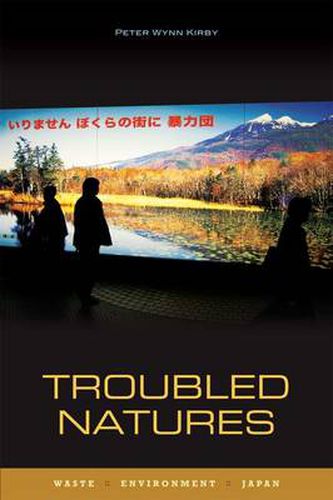Readings Newsletter
Become a Readings Member to make your shopping experience even easier.
Sign in or sign up for free!
You’re not far away from qualifying for FREE standard shipping within Australia
You’ve qualified for FREE standard shipping within Australia
The cart is loading…






Kirby casts his anthropological lens over two Tokyo neighbourhoods, comparing environmental consciousness and conduct in communities facing specific toxic threats (real or perceived). In each field-site, the tension between lofty rhetoric and daily practices helps highlight the practical ambivalence of Japanese environmental consciousness. Waste practices and ideas of pollution in Tokyo tie clearly into broader social issues such as exclusionary practices, emergent lifestyle changes, recycling efforts, and novel forms of energy production. Throughout, waste and environmental health problems in Tokyo collide against diverse cultural elements linked to nature(s) uneasy relations between animals and humans; native conceptions of the foreign and the polluted; reproductive challenges in the face of a plunging fertility rate; and changing attitudes toward illness and health. The book’s thoughtful inquiry into the ways in which environmental questions circulate throughout Japanese society furnishes insight into central elements of contemporary Japanese life.
$9.00 standard shipping within Australia
FREE standard shipping within Australia for orders over $100.00
Express & International shipping calculated at checkout
Kirby casts his anthropological lens over two Tokyo neighbourhoods, comparing environmental consciousness and conduct in communities facing specific toxic threats (real or perceived). In each field-site, the tension between lofty rhetoric and daily practices helps highlight the practical ambivalence of Japanese environmental consciousness. Waste practices and ideas of pollution in Tokyo tie clearly into broader social issues such as exclusionary practices, emergent lifestyle changes, recycling efforts, and novel forms of energy production. Throughout, waste and environmental health problems in Tokyo collide against diverse cultural elements linked to nature(s) uneasy relations between animals and humans; native conceptions of the foreign and the polluted; reproductive challenges in the face of a plunging fertility rate; and changing attitudes toward illness and health. The book’s thoughtful inquiry into the ways in which environmental questions circulate throughout Japanese society furnishes insight into central elements of contemporary Japanese life.